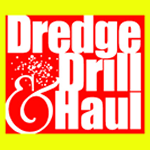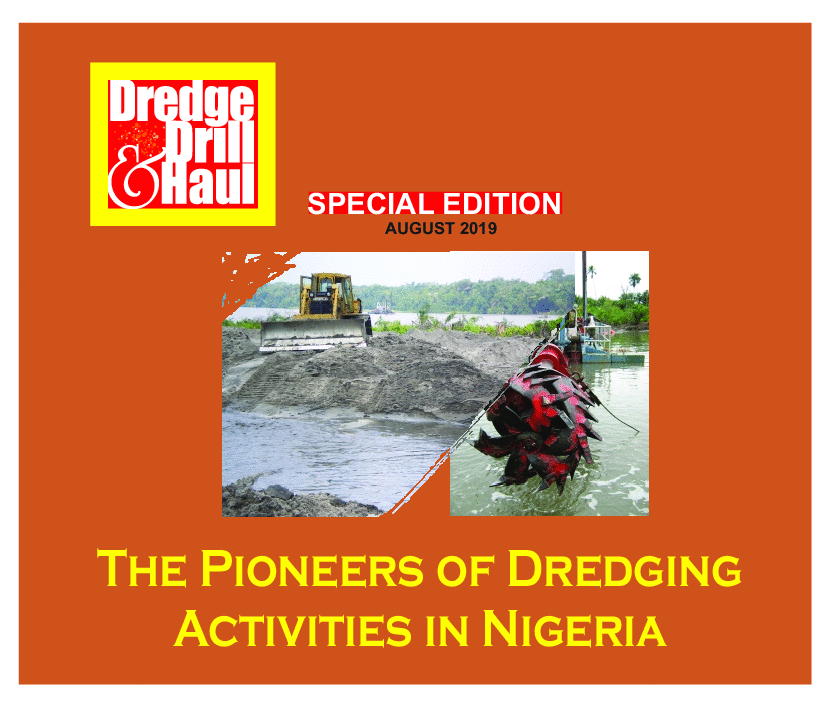BY EDMUND CHILAKA
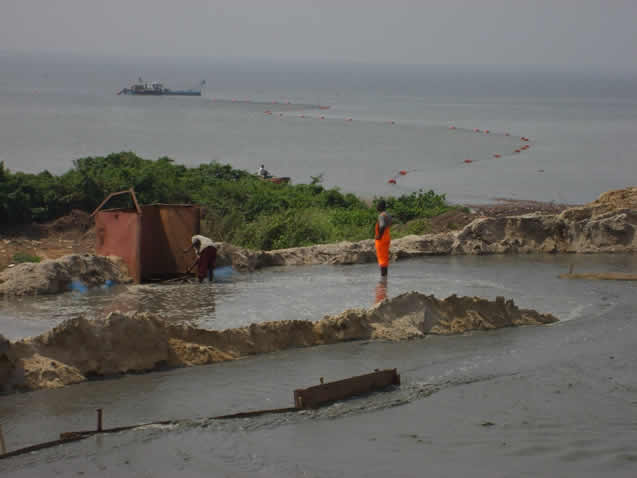
Introduction
The origins of mechanized indigenous dredging activities in Nigeria has largely remained a guesswork despite the steady growth and advancement of the practice by Nigerians. As for the introduction of the technology in Nigeria, historical evidence shows that the precolonial attempt to foster vibrant sea trade by European traders and merchants in Lagos necessitated the removal of the sand shoals preventing entry of deep-drafted ships into the Lagos harbor in the late 1890s. Consequently, in 1906 a dredger named Egerton dredged the lagoon mouth to deepen it. From that period, heavy-laden ships with cargoes began to enter, off-load and load at the Customs Port which was situated at the Lagos Marina. Due to the high siltation rate at the lagoon, all the port systems of Lagos continued to be dredged in order to maintain the advertised depths for calling ships. However, harbor works are not the entirety of the dredging industry in Nigeria, as the oil and gas, civil engineering construction, coastal shoreline protection and beach replenishment, sand mining, and even oil spill site remediation subsectors routinely require various levels of dredging services and solutions.
Foreign Dredging Pioneers in Nigeria
For the purposes of the Special Edition which is focused on the pioneers of the industry in Nigeria, it has to be noted that the entire gamut of mechanized dredging industry was formerly under the sole control of European, especially Dutch, firms until the early 1970s. They included Ballast Ham Dredging, Nigerian Dredging and Marine Ltd (NDM), Netherlands Engineering and Consultancy Services (NEDECO), Royal Boskalis /Westminster Dredging, Jan de Nul, Van Oord, Dredging International and Royal Haskoning. All the dredging jobs and projects belonging to the Nigerian government, the oil and gas drilling companies, public and private sector land reclamation and sand winning enterprises were accomplished by one or a combination of these firms. As well, the accompanying surveying services were provided by expatriate companies. The dredgers and dry plants in use were manufactured by even fewer firms including IHC Merwerde of Holland, Damen Dredging Equipment and Ellicott Dredges USA Inc. There may have been others but the latter were the dominant suppliers of dredging equipment to Nigeria throughout the last century. In the area of dry plants, Caterpillar, etc. Although the commanding heights of this industry were held by the foreign owners and managers of the dredging firms, Nigerians were employed in various skilled, semi-skilled and unskilled positions in their organizations.
During the first phase of the employment of Nigerians in foreign dredging firms between the late 1950s and the 1980s, they were employed mainly as supervisors (Captains), dredgemasters, sandfill masters, deckhands, crane operators, winch operators, marine engineers, marine engineer assistants (MEAs), greasers, dry plant operators, welders, fitters and electricians. With their advancement in skill, work experience and managerial capacities, Nigerian employees were elevated since the 1990s to such positions as surveyors, superintendents, works manager, project managers, contracts managers, operations managers, plant managers and commercial managers. However, many of these employees had higher ambitions than sedentary or routine employment. While employed at their tasks for many years, some had espied the chances and opportunities of self-employment using the knowledge, skills and capacities they had developed, or job exchange to better-paying organizations. Indeed, the human capacity development in the Nigerian dredging industry seemed remarkable. Westminster Dredging Services, for example, had a school for the training of deserving employees.
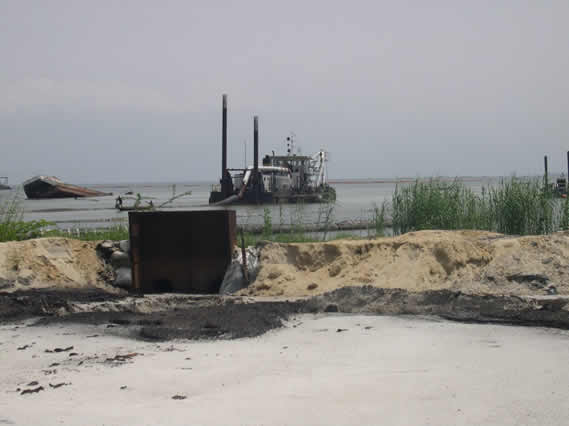
sand in Lagos waters
Table 1: Partial List of Pioneer Dredging Firms in Nigeria by Year of First Operation
| S/ no | Name of Operator | Year First Operated in Nigeria | Areas of Operation | Local /Foreign |
| 1 | Royal Haskoning DHV Nigeria | 1946 | Engineering consultants | Foreign |
| 2 | Nedeco Netherland | 1940s? | Engineering consultants, dredging services | Foreign |
| 3 | Westminster Dredging Nig. Ltd | 1947 | Sand mining, general services | Foreign |
| 4 | Nigerian Dredging and Marine | 1947 | Sand mining, general services | Foreign |
| 5 | Ham Dredging Nigeria Ltd | 1963 | Sand mining, harbor works | Foreign |
| 6 | Tayasa Dredging Company | 1972 | Channel Dredging, sand mining | Local |
| 7 | Dredging International | 1991 | Sand mining, remediation | Foreign |
| 8 | Giorgio Dredging services | 1992 | Sand stockpiling, reclamation | Foreign |
| 9 | Funq Tai Engineering and Construction Company | 1978 | Civil engineering, dredging works | Local |
| 10 | Fobi Dredging Nigeria Ltd | 1995 | Sand mining, well-head sweeping | Local |
| 11 | Nigerian Westminster Dredging and Marine | 2000 | Sand mining, general services | Foreign |
| 12 | B and Q Dredging | 2007 | Dredging services | Local |
| 13 | Julius Berger Nigeria Ltd | 1990 | Dredging services | Mixed |
| 14 | Van Oord Nigeria Ltd | 2003 | Harbour Dredging; other services | Foreign |
| 15 | Jan de Nul | Foreign | ||
| 16 | Lagos Channel Management | 2006 | Channel Dredging Services | Joint Venture |
| 17 | Bonny Channel Company | 2006 | Channel Dredging Services | Joint Venture |
| 18 | Calabar Channel Management Company | 2014 | Channel Dredging Services | Joint Venture |
The Impact of Chinese Dredging Technology in the Nigeria’s Sand Mining Industry
Due to the skeletal nature of the basic Chinese sand mining technology, that is, one mother dredger working some kilometres into the sea and pumping sand onto three transporters and one 8-inch dredger as pusher to the shore, a lot of the operating costs usually incurred by operators of gigantic European and US dredgers were simply cut off. The cost savings accrued from less diesel use, reduced workforce and salaries per dredging spread and no need for sand search report. These advantages gave operators of Chinese dredging machines latitude to cut the price of sand drastically so that operators of European and US machines could hardly compete. For example, whereas the budget to import and launch the smaller European and US dredgers, say 10-inch cutter suction, for sand mining could take up to $1.5m, many Chinese and Nigerian operators now assemble 6-inch or 8-inch cutter suction Chinese dredgers here in Nigeria from as low as N20m, so that with a total of N45m a complete small-scale dredging spread is ready for prospective sand mining dredging outfits to launch the business. As well, all the cost implications for the two different models vary in the same quantum of price differential, so that many average cost-conscious startup dredging outfits in Nigeria today tend to go the Chinese way. In further comparison, an Ellicott 14-inch dredger operating in a burrow pit with available materials can produce 1,000 cubic metres of sharp sand per day while the popular Chinese models will need a minimum of 2 days to do the same feat, given a uniform pumping distance of 600m. Again, windy or rainy conditions which create wave action or instability caused by incoming tidal wave can disrupt the movement of the transporters, making steering difficult and increasing the diesel consumption; they operate best in calm waters. There are bigger Chinese dredgers such as 14-inch, 18-inch or higher but very few takers here. Comparing the longevity of the two dredger models, there is a reverse order as the European and US dredgers last longer, clocking up to 25-30 years of steady operation if well maintained, whereas the average low-cost Chinese dredger might not last longer than 3 or 4 years, especially with the notoriously poor maintenance culture of Nigerians.
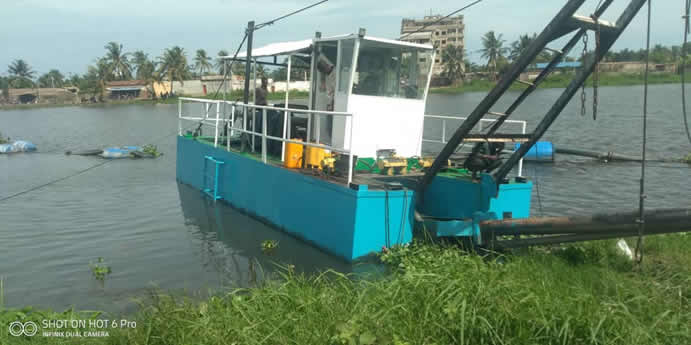
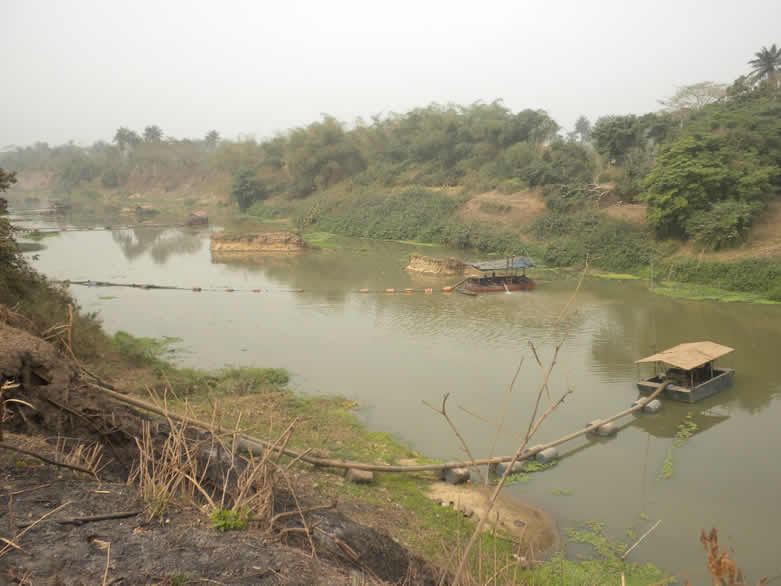
Overall, in the short run, the takeover of the Nigerian lower-scale sand mining industry by Chinese dredging technology has negatively affected many Nigerians who invested in European and US hardware from the late 1980s to the beginning of the new millennium. Few managed to switch over to the Chinese bandwagon. Some are also disoriented because the change in sand pricing dynamics put a spanner in their calculations of expected income vis-à-vis the payback plans for the bank loans used to acquire the costly dredgers. Before the coming of the Chinese, around 2008 and 2009, sharp sand generally sold for N2,000.00 per ton in most parts of the Lagos sand market. Ten years down the line, the price has dropped to an average of N1,300.00 per ton following the intense jostle for customers by the streetwise Chinese. Add to that the ugly situation of having Chinese nationals competing with Nigerian citizens right on the waterfronts of the country to mine and retail sand, many of them operating with the obvious advantage of better financial support and incentives from the Chinese Government. Moreover, indigenous operators in the Lagos area have been jolted by the changes in the dredging guidelines which mandated a stricter regime of licenses for the dredger and the land for sand stockpiles, and the non-transferability of licenses between multiple equipment, even if they belong to the same organization. In reality, many applications for licenses by non-indigenes were routinely turned down for inexplicit reasons that in fact had to do with an alleged unspoken state government policy to reserve the industry largely for the indigenes. The politics of the issue was usually solved by co-opting influential Yoruba elites or land owners as directors or chairmen of dredging outfits for the purpose of confusing the assessors or to make-believe the operator was indigenous.
Mother Dredgers and Transporters
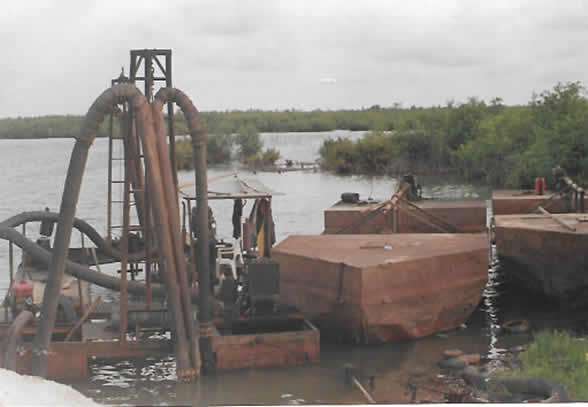
The concept of mother dredger and transporters is a patent Chinese format for the Nigerian market which began with the scruples made by the Lagos State Ministry of Waterfront Infrastructure from 2007. At the time, the Commissioner, Prince Adesegun Oniru, told dredging operators to switch to the idea of having their burrow pits right inside the lagoon, 1000m or 2000m away from the shoreline. His idea was that the mother dredger should pump sand into a transporter or a barge which would convey the same to the shoreline for a second handling to offload the material. He cited environmental concerns to back his argument. However, the trend did not catch on because the prescribed model also came with extra costs for most of the operators which were using Ellicott, IHC or DSC dredgers. Using a long pipeline to the sand bund wall implied more bunker to push the slurry and more pipes and fittings; it might also require a booster station or two, depending on the power of the dredger. None of the operators of the European- and US-built dredgers ever used a transporter.
All that changed however when the Chinese dredging technology became the vogue after the global financial crisis of 2008. Most Nigerians who acquired them also acquired transporters, some up to three or four. Transporters also came in various sizes, 25 tons, 35 tons, 60 tons which take about twenty minutes or more to be filled with sand before they steam back to the shore. At the shore, the under-plate or retractable bottom opens to release the haul for the second pumping to the sand dump for sale or spreading. Overall, this is the historical overview of the trends of Nigeria’s dredging sector from inception to the second decade in the new millennium. The indigenous operators have mixed with Chinese traders to master the small- to medium-scale levels of the dredging sector in Nigeria. Whether they progress to compete with the Dutch for the higher levels of the business remains to be seen.
